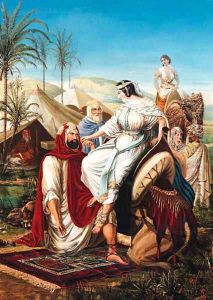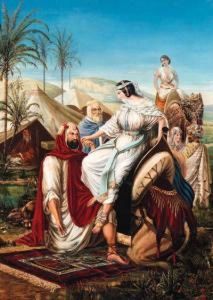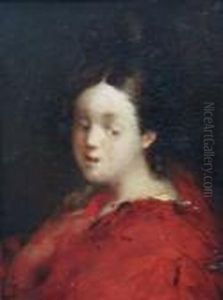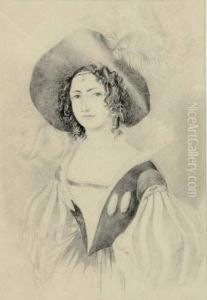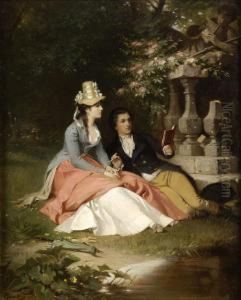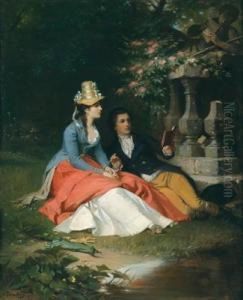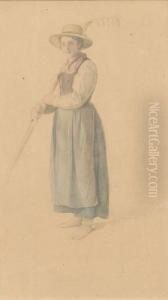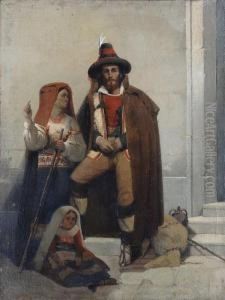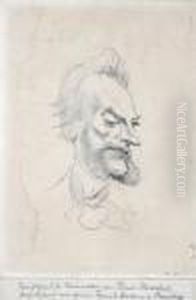Arthur Georges Baron Von Ramberg: Paintings
Arthur Georg Baron von Ramberg was an Austrian-born painter and illustrator who became well-known for his works in Germany during the 19th century. Born on September 4, 1819, in Vienna, Austria, he was part of a noble family with a milieu that appreciated arts, which allowed him to foster his artistic talents from a young age.
Ramberg initially studied at the Academy of Fine Arts in Vienna under the guidance of Joseph von Führich and Leopold Kupelwieser. His early work was influenced by the Biedermeier style, which was prevalent in Austria during that time. The Biedermeier period emphasized simplicity and a focus on domestic life, which can be seen in Ramberg's early genre paintings and portraits.
In search of broader artistic influences, Ramberg moved to Munich in 1841, where he became a pupil of the famous painter Carl Theodor von Piloty. Under Piloty's tutelage, Ramberg honed his skills in historical painting and fine-tuned his technique. Munich was a vibrant artistic hub during the 19th century, and Ramberg benefited from the exchange of ideas among his peers and the exposure to different artistic styles.
Ramberg's work gained recognition for its detailed depiction of historical and literary scenes. He was particularly adept at capturing the nuances of courtly life and was known for his excellent draftsmanship and use of vibrant colors. His illustrations for literary works, such as Shakespeare's plays and Goethe's poems, were celebrated for bringing these stories to life with a keen eye for the dramatic and the romantic.
In 1853, Ramberg became a professor at the Royal Academy of Arts in Hanover, where he influenced a new generation of artists. His role as an educator was significant, as he imparted the techniques and styles he had mastered to his students. The latter part of his career was marked by his continued success as a painter and illustrator, with numerous commissions from nobility and the cultural elite of the time.
Arthur Georg Baron von Ramberg passed away on February 5, 1875, in Munich, leaving behind a legacy of work that continues to be admired for its elegance and historical value. His paintings and illustrations remain a testament to the skill and artistry of 19th-century European art.
